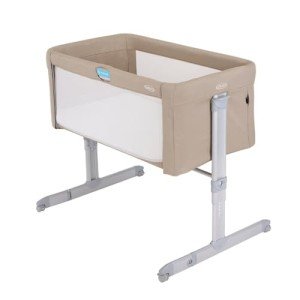The Side Sleeping Crib: A Comprehensive Guide for New Parents
Welcoming a newborn into the world is a cherished experience filled with joy and obstacles. Among Bedside Crib For Attachment Parenting need to navigate, choosing the best sleeping plan for their baby is critical. One innovative service that has actually gained popularity in current years is the side sleeping crib. Bedside Cot That Attaches To Bed will look into the features, advantages, and considerations surrounding side sleeping cribs, providing an indispensable resource for new parents.
What is a Side Sleeping Crib?
A side sleeping crib, also called a co-sleeper or bedside crib, is created to offer a safe sleeping space for infants while keeping close proximity to their parents. These cribs can be attached to the side of an adult bed or used as standalone systems. They provide the benefit of co-sleeping without sharing the exact same sleep surface, lowering the threat of suffocation and helping with easier nighttime feedings and reassuring.
Advantages of a Side Sleeping Crib
- Increased Safety
Among the main benefits of side sleeping cribs is improved safety. The American Academy of Pediatrics recommends that infants sleep in the exact same room as their parents for a minimum of the very first 6 months to lower the threat of Sudden Infant Death Syndrome (SIDS). By utilizing a side sleeping crib, parents can keep their baby within arm's reach while adhering to safety standards. - Convenient Nighttime Feeding
Nighttime feedings can be a strenuous routine for new parents, but a side sleeping crib makes this procedure considerably easier. Parents can merely reach over to comfort or breastfeed their baby without needing to completely awake or rise. - Reduces the Transition to Independence
Side sleeping cribs can assist in gradually transitioning babies into independent sleep environments. Parents can move the crib further far from their bed over time, promoting independence while still keeping a complacency for the kid. - Saves Space
For families living in smaller sized homes or homes, a side sleeping crib inhabits less space than a conventional crib, making it an ideal choice for those with limited room. - Promotes Bonding
Close proximity allows parents to easily keep track of and react to their baby's requirements, promoting bonding and attachment during those essential early months.
Choosing the Right Side Sleeping Crib
When selecting a side sleeping crib, a number of factors need to be thought about to ensure it fits the requirements of both the baby and the parents:
- Safety Standards: Ensure that the crib meets security standards set by credible companies, such as the Consumer Product Safety Commission (CPSC).
- Adjustability: Look for cribs with adjustable heights to align with the parents' bed and ensure easy access.
- Stability: A silver lining sleeping crib ought to be stable without wobbling or moving when connected to the moms and dad's bed.
- Portability: Consider cribs that are lightweight and have wheels for easy motion around your house.
- Material: Opt for cribs made from non-toxic products that are devoid of hazardous chemicals.
Elements to Consider
While side sleeping cribs present numerous advantages, parents should also keep these consider mind to make a notified choice:
- Size of the Bed: Ensure the crib fits safely together with the adult bed, without gaps that could present a security risk.
- Baby's Growth: Be aware that as infants grow, their sleeping needs will change. Some cribs are convertible and can be used longer than traditional cribs.
- Sleeping Habits: Consider how easily you and your partner get used to having the baby nearby throughout the night.
Frequently Asked Questions About Side Sleeping Cribs
Q1: Are side sleeping cribs safe for newborns?A1: Yes, side
sleeping cribs supply a safe sleeping environment for newborns when utilized correctly, as they minimize the danger of SIDS while enabling parents to stay close.
Q2: How do I assemble a side sleeping crib?A2: Assembly guidelines normally accompany the crib. Ensure it is firmly attached to the adult bed, following the guidelines offered by the maker. Q3: Can I use a side sleeping crib
for longer than six months?A3: Yes, lots of side sleeping cribs can accommodate infants beyond
six months, depending upon their development and development. Check the producer's requirements for weight and height limits. Q4: What if my baby rolls over?A4: Most side sleeping cribs are developed with security functions
to avoid babies from presenting.
However, always monitor your baby and seek advice from pediatric standards about the correct time to shift them to a crib. The side sleeping crib is a versatile and beneficial sleeping solution for new parents.
It offers security, convenience, and support throughout the early phases of being a parent while promoting closeness in between moms and dad and kid. By thinking about Bedside Cot For Safe Sleeping , adjustability, and individual family requirements, parents can make an educated decision about this vital piece of baby equipment. Table: Pros and Cons of Side Sleeping Cribs Pros Cons Improved security throughout sleep Limited use period as baby grows
Alleviate of nighttime feeding May require additional space Promotes bondingChangeperiod forparents and baby Saves physical space Potential for unpredictable sleeping patterns Aswith any parenting choice, whatworks best will constantly depend upon individual family dynamics. Highlighting security,convenience, and connection will assist parents selectthe right sleeping arrangements for their youngsters to ensure an excellent start to
life.

